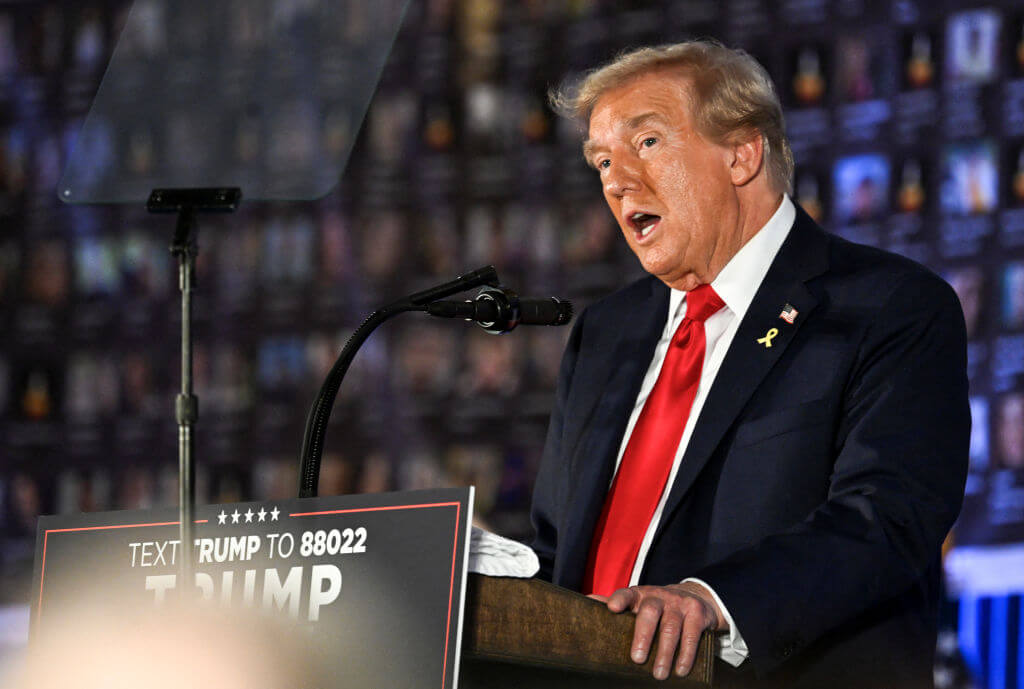Experts Say Deal Eases Iran Bomb Threat — Despite Israel Objections
A breakthrough agreement between Iran and six world powers to restrain its nuclear programme has been denounced by Israel as an “historical mistake” but should nevertheless make it significantly harder for Tehran to build any atomic bomb.
By halting Iran’s most sensitive enrichment of uranium and stopping other aspects of its nuclear activities from expanding, Sunday’s interim accord is designed to buy time for negotiations on a final settlement of the decade-old dispute.
However, Iran will for now retain thousands of centrifuges refining uranium – albeit only to concentrations far below that needed for nuclear weapons – and a stockpile that could potentially be devoted to bomb-making if processed much more.
The Islamic Republic has long denied accusations that it seeks the capability to make nuclear weapons, saying it only aims to produce electricity and isotopes for medical use.
“The short-term deal accomplishes a great deal,” nuclear proliferation expert David Albright of the U.S. Institute for Science and International Security (ISIS) said.
For example, he said, it would eliminate Iran’s stock of uranium gas refined to a fissile purity of 20 percent, a source of profound concern for the West as it represents a relatively short technical step away from bomb-grade material.
Under the agreement, Iran must halt this higher-grade enrichment and also dilute or convert its existing reserve of such uranium to a form that is not suitable for further enrichment, according to a U.S. fact sheet.
Once this is done, the breakout time – how long it would take Iran to produce sufficient highly-enriched uranium (HEU) for one atomic bomb – would lengthen from at least 1-1.6 months to at least 1.9-2.2 months if the Iranians used all their installed centrifuges, Albright said in an e-mail.
“This may seem a small increase. But with the IAEA daily checking the camera film at Natanz and Fordow, this increase in breakout times would be significant,” he said, referring to the U.N. nuclear watchdog, the International Atomic Energy Agency.
Iran has committed to grant IAEA inspectors daily access to its underground enrichment facilities at Natanz and Fordow, its most contested nuclear plants, the U.S. fact sheet said.
“This access will provide even greater transparency into enrichment at these sites and shorten detection time for any non-compliance,” it said.
ISRAEL DENOUNCES DEAL
The IAEA, whose mandate is to ensure no nuclear material is diverted for military purposes in member states, is currently believed to visit Natanz and Fordow about once a week.
“This agreement virtually eliminates the possibility of Iran dashing towards a nuclear weapon without prompt detection by the U.N. nuclear inspectors,” said Ali Vaez of the International Crisis Group think-tank.
But analysts caution that no one can rule out the existence of secret nuclear sites in Iran without it agreeing to let the IAEA conduct snap inspections anywhere beyond declared atomic installations under the agency’s Additional Protocol regime.
Diplomats say they have no clear indication that Iran harbours any such clandestine facility now but – given Tehran’s previous concealment of some nuclear sites from the IAEA – world powers are expected to seek Iranian adoption of the Additional Protocol as part of a broad, final settlement.
Refined uranium can be used to fuel nuclear power plants – Iran’s stated goal – but can also provide the fissile core of an atomic bomb if refined to the 80-90 percent threshold.
“The first phase of the agreement ensures that Iran will not make any further progress towards a bomb while we continue to negotiate a complete end to the programme,” said Joseph Cirincione of the Ploughshares Fund group, which campaigns against the spread of nuclear, biological and chemical weapons.
Israel, believed to be the Middle East’s only nuclear-armed state, made clear already before this week’s talks in Geneva between Iran and the United States, Russia, China, Britain, France and Germany that it opposed the proposals on the table.
The Jewish state regards Iran as a mortal threat and wants it to dismantle its entire enrichment infrastructure.
Israeli Prime Minister Benjamin Netanyahu described the deal with Iran as a “historic mistake” that left the production of atomic weapons within Tehran’s reach.
“Today the world has become a much more dangerous place because the most dangerous regime in the world took a significant step towards obtaining the world’s most dangerous weapon,” he said.
VERIFICATION “LANDMINES”
But proliferation expert Mark Fitzpatrick of the International Institute for Strategic Studies, a think-tank in London, said the deal “significantly sets back” Iran’s ability to produce a nuclear weapon without being detected and stopped.
“Just a few weeks ago analysts were projecting that by next summer Iran might be able to produce a weapon’s worth of uranium within a week or so,” Fitzpatrick said.
“Now it will be months. Yes, enrichment will continue – that was inevitable – but it will be more tightly inspected.”
Still, verification will be “full of landmines”, warned Mark Hibbs of the Carnegie Endowment think-tank. “This will require a level of cooperation and information-sharing between the IAEA, the powers and Iran which is probably unprecedented concerning one country’s nuclear programme.”
The official agreement text has not been made public. But the U.S. fact sheet said Iran had also agreed not to hook up additional centrifuges of any type, leave inoperable roughly half of the installed such machines at Natanz, and not to increase its stockpile of 3.5 percent enriched uranium, among other things.
“It is not quite a freeze, but in the most important respects it is,” Shashank Joshi, an Iran expert at the Royal United Services Institute (RUSI) in London, said.
According to the IAEA’s latest report on Iran, the country already has more than 7,000 kg (15,400 pounds) of low-enriched uranium, an amount experts say could be enough for four bombs or more if refined to 90 percent fissile concentration.
After sharply escalating its nuclear programme since it started refining uranium in 2007 in defiance of U.N. Security Council resolutions, Iran now has more than 19,000 installed centrifuges, of which some 10,000 are operating. That would not appear to change much under Sunday’s interim agreement.
The United States said Iran had also agreed not to continue with construction of its Arak heavy-water reactor, which could produce plutonium once operational – an alternative fissile source for nuclear bombs.
Albright said “very tough” issues remained to be negotiated to achieve a long-term comprehensive agreement that would ensure Iran that does not build nuclear weapons. “Iran and the United States remain far apart. What will be the exact limits on the size and scope of Iran’s centrifuge programme?”
A message from our CEO & publisher Rachel Fishman Feddersen

I hope you appreciated this article. Before you go, I’d like to ask you to please support the Forward’s award-winning, nonprofit journalism during this critical time.
We’ve set a goal to raise $260,000 by December 31. That’s an ambitious goal, but one that will give us the resources we need to invest in the high quality news, opinion, analysis and cultural coverage that isn’t available anywhere else.
If you feel inspired to make an impact, now is the time to give something back. Join us as a member at your most generous level.
— Rachel Fishman Feddersen, Publisher and CEO























